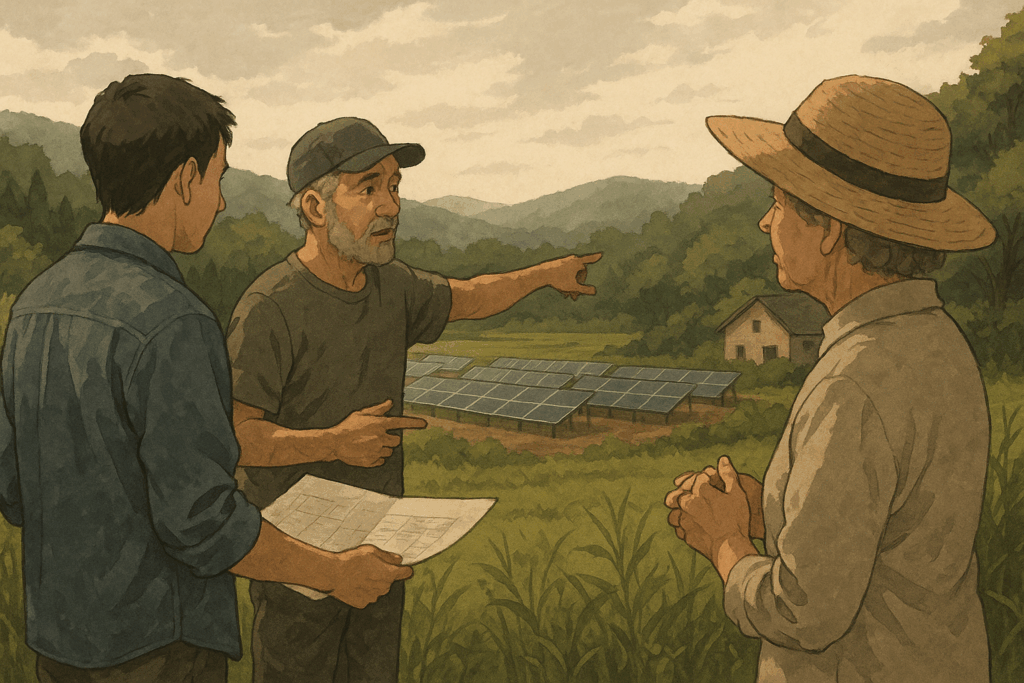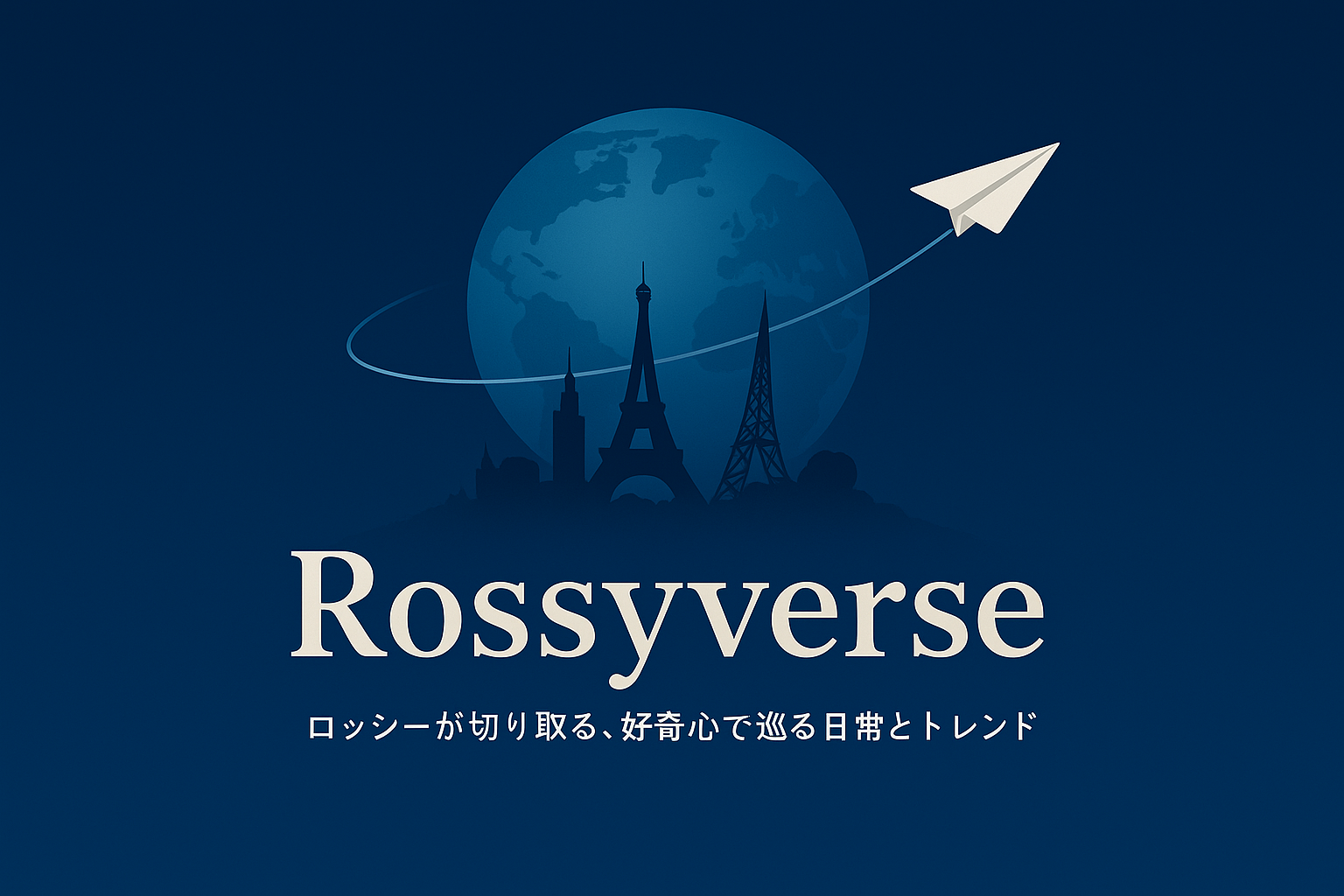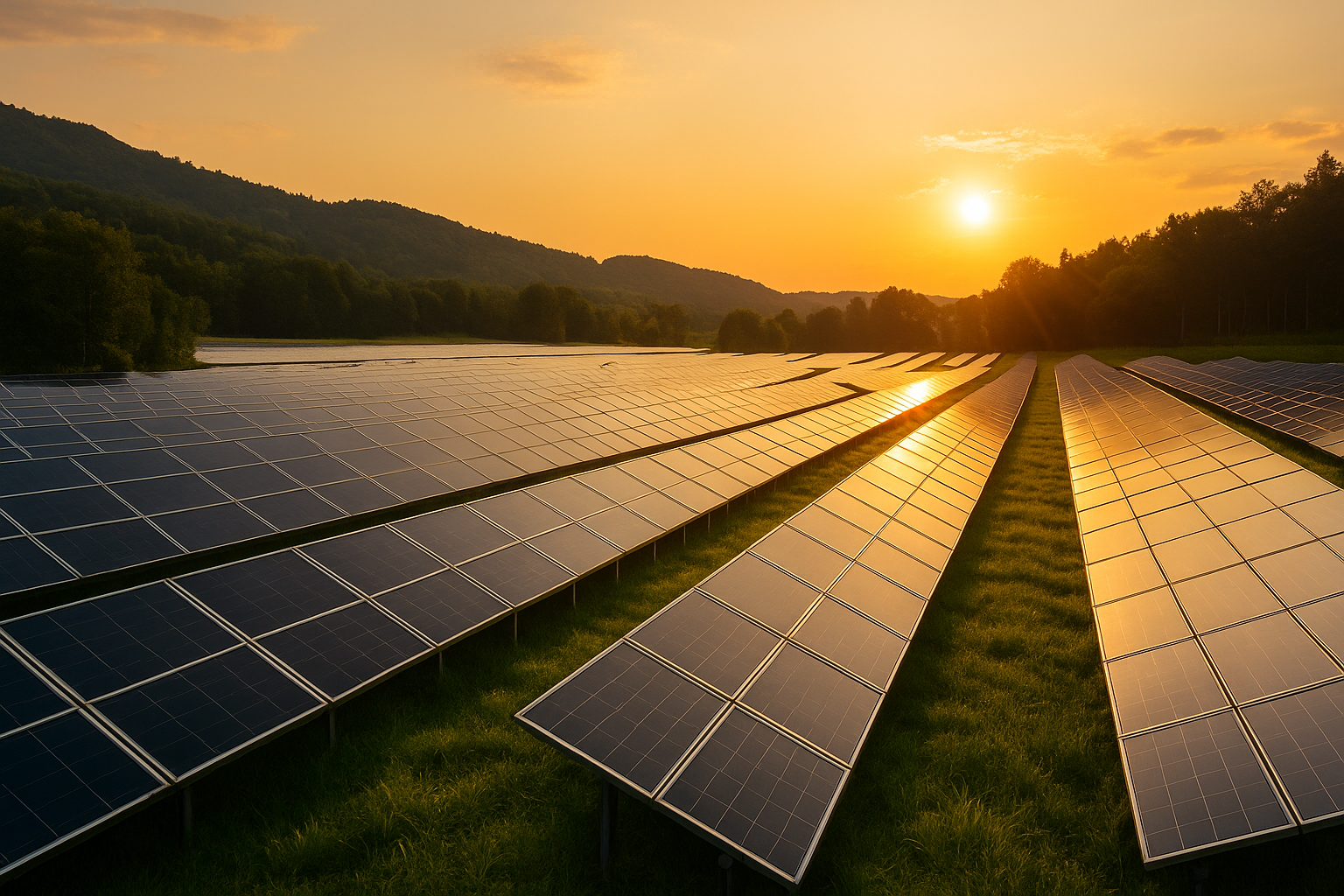最近よく見かけませんか?
山がまるごと黒いパネルに覆われた、あの「メガソーラー発電所」の風景。
でも…あれって、本当に“持続可能”なんでしょうか?
木々が根こそぎ伐採され、生き物の居場所が奪われる。
生態系が失われ、元の自然にはもう戻れない。
そんな景色を目の当たりにして、僕は心から怖くなりました。
SDGsって、こういうことをするためのものじゃなかったはずです。
でも一部では、そういった破壊的な事例を取り上げて、
「ほら、これがSDGsの正体だ」と言わんばかりに批判する人たちもいます。
本来の理念が、ねじまげられて利用されてしまっている現状に、僕は深い悲しみと怒りを感じます。
そもそも、こんな強引なやり方がまかり通る背景には、
この国の「環境問題への無関心さ」があるのではないでしょうか。
SDGsが世界的に始まってから7年も、日本ではあまり話題にもならず、
ようやく注目され始めた頃には、すでに“ビジネスの種”として見られていた。
法整備も追いつかず、「これなら許可が通りやすいですよ」と
自治体が無邪気にアドバイスまでしていた…という話も聞きます。
本当に、僕たちはこのままでいいのでしょうか?

僕は思うんです。
地域や個人、自然環境を「別物」として考えるのは、もうやめませんか?
もちろん、再生可能エネルギーの開発は必要です。
でも、それを口実に自然を犠牲にしてしまうのでは、意味がない。
もっと、幅広い層が参加するディスカッションの場をつくって、
新しい仕組みや発想を、みんなで形にしていくべきだと思います。
そして日本人特有の「ルールがないと動けない」という性質も考えたら、
ある程度のガイドラインや監視体制も、早急に整える必要がある。
新しい産業であればこそ、
初めから“クリーン”な形で育てることができるはずです。
自然と共に生きる。
それを、当たり前の選択肢にしていくために――。
僕たちは「持続可能性」を掲げるなら、
もっと“未来に対する責任”を本気で考えなくてはいけない。
そもそも、SDGsの出発点は「誰ひとり取り残さない」という約束だったはずだ。
それは人間だけでなく、自然や生態系も含めた“地球全体”の話だ。
けれど今の日本では、経済性や効率を優先するあまり、その大前提が置き去りにされているように見える。
「持続可能」という言葉は便利だ。
誰にでも響きがよく、ポジティブな印象を与える。
だからこそ、そこに利益や政治的な思惑が入り込むと、あっという間に本来の意味が薄れてしまう。
気づけば、言葉だけが独り歩きして、実態はまるで逆方向に進んでいる――そんな光景を僕たちは目にしている。
もちろん、国や企業だけの責任ではない。
僕たち一人ひとりもまた、「本当の持続可能性とは何か」を考える視点を持たなければいけない。
たとえば、普段の買い物で環境に配慮された商品を選ぶこと。
電気の使い方を工夫すること。
地域での小さな活動に参加すること。
どれも目立たないけれど、確実に未来につながる行動だと思う。
そして、忘れてはいけないのは「対話」の大切さだ。
異なる立場の人が集まり、意見を交わすことでしか見えない解決策がある。
行政、企業、市民、そして若い世代。
それぞれが本気で語り合い、共通のビジョンを描く場を増やしていくこと。
それが、SDGsを“言葉”ではなく“現実”にしていく一歩だと思う。
未来は、与えられるものではなく、つくり出すもの。
僕たちがその責任をどう果たすかに、すべてがかかっている。
SDGsを掲げるなら、それにふさわしい姿勢で。
🔗あわせて読みたい記事
- [豊かな国の、見えない貧困 ― SDGsと僕たちができること]
日本の貧困の現実と、私たちにできることを考える記事です。 - [捨てる国で、飢える子ども — わたしたちが問われていること]
食の不均衡と子どもの飢餓を取り上げた記事です。
What Was SDGs Supposed to Be? — When “Sustainability” Is Replaced by Profit
In recent years, the term SDGs (Sustainable Development Goals) has become familiar even in daily conversation. It was originally a global set of goals designed to protect people, nature, and the future. However, I’ve started to feel that something has gone off track.
For example, large-scale solar power developments. Of course, the use of renewable energy is a crucial effort for the planet. But some of the huge solar farms built in Japan are the result of deforestation and topographical changes. Even local residents are puzzled and anxious, wondering:
“Why cut down trees to generate clean energy?”
“Why does it feel like nature is being sacrificed for sustainability?”
Indeed, there are times when “the means” (solar power) and “the purpose” (sustainability) become confused. I wonder:
Is this truly sustainable, or is it just convenient for those seeking profit?
The SDGs themselves are not to blame. What we should be wary of are people or companies that use the banner of “SDGs” as a tool for money-making, without understanding its true purpose. Once profit becomes the priority, the essence is lost.

Originally, SDGs were meant to be a guideline for creating a better society. Not a system to boost corporate image. Not a justification for environmental destruction. It’s precisely because our planet has limited resources that we must seek truly sustainable solutions.
For that reason, large-scale energy developments should be strictly evaluated by the government or independent third parties. Solar power is not the enemy. But how it’s implemented determines whether it truly serves the earth or merely a handful of interests.
At its core, the SDGs began with a simple promise: “Leave no one behind.”
That promise was never meant for humans alone, but for the entire Earth—nature, ecosystems, and every living thing.
Yet in Japan today, it often feels as though that foundation has been forgotten, replaced by the pursuit of profit and efficiency.
“ Sustainability” is a convenient word.
It carries a positive tone, one that appeals to everyone.
But precisely because of that, when financial or political interests seep in, its original meaning quickly fades.
Before we know it, the word marches on by itself, while the reality heads in the opposite direction.
Of course, this is not only the responsibility of governments or corporations.
Each of us must also hold onto the question: What does true sustainability mean?
It could be as simple as choosing eco-friendly products in daily shopping.
Finding ways to use energy more wisely.
Joining small local initiatives.
These may seem invisible, but they are real steps toward the future.
And above all, we cannot forget the importance of dialogue.
Solutions that work for everyone will only emerge when people from different positions sit down and speak openly.
Governments, businesses, communities, and the younger generation—
each must bring their voices together to draw a shared vision.
Only then can the SDGs shift from being just “words” to becoming lived reality.
The future is not something given to us.
It is something we create—and it depends entirely on how we choose to take responsibility.
I still believe in the ideals of the SDGs. That’s why I want to speak up.
Let’s not forget what “sustainability” really means.
🔗Related Articles
- [Invisible Poverty in a Wealthy Country — What We Can Do Through the SDGs]
An article exploring hidden poverty in Japan and what individuals can do. - [A Country That Wastes While Children Go Hungry — What We Must Rethink]
An article highlighting food disparity and child hunger.




コメント